When I relayed a message from Tom to Dave about a Chrysler Traveler, I had no idea that in the process I would get to see Dave’s amazing Ford Model AA Truck. Rather than ramble on about it, I’ll just let Dave tell you the story in his own words: I found the truck on my way home from bow hunting. I decided to take a different route home and see if I could find some new land to hunt on. I stopped at a classic looking old farm with the long driveway, old barns etc… While talking with the owners about hunting, the subject of old trucks came up because they had a 1949 grain truck parked in the front yard. I mentioned that I liked restoring old stuff and had been keeping my eye out for a truck to restore. The grain truck was one her grandfather had purchased new. It hadn’t been used in years and they said they would consider selling it to me. After looking it over I decided that it probably wasn’t the truck for me. That is when the gent said “Well I have a 1929 AA truck in the barn. Would you be interested in it?”
Silly question… Yes, I was certainly interested! Turns out the truck hadn’t been run in 50 years. For 10 years it sat out in a pasture and then the following 40 years it sat in the barn. The barn had settled quite a bit. So much so I had to dig trenches for the tires so the top of the cab could clear the door header while pulling it out.
After I got the truck home I hung a temporary gas tank from one of the roof headers, cleaned and set the points, put in a new battery and gave it a crank. Only took me 20 minutes of work to get it to run. The engine was pretty worn and since the serial numbers matched the frame I decided that a complete rebuild was in order as I didn’t want to risk throwing a rod and damaging the engine beyond repair.
I did what I call a preservation restoration on the truck. I pulled everything apart on the truck, inspected and replaced, as needed, every gear, bearing, and seal. Over the course of the restoration I ended up having to purchase two more parts trucks and more to get the correct nuts, bolts, brackets to make it as original as possible. The remainder of the parts not needed from the parts trucks went to other restorers all over the U.S. and Canada.
When I got the truck both rear fenders were long removed from the truck. I was lucky to find two fenders in Washington State. The right rear fender was nicely rusted and pretty much matched the truck but the left rear fender was N.O.S. This posed a problem because when I stripped the paint off the fender looked like it had just come out of the fender press. Since this would look way out of place on the truck the rusting process began in earnest. It took me a full year to get it to rust up, but it turned out nice and no one has yet to notice that the fender is not original to the truck.
The front and side boards of the box are all original to the truck. Originally the truck would have had three sets of side boards, but the father of the man I bought the truck from needed some wood to fix a hog trough and since the truck was parked in the pasture, that’s where he got the wood. The rear of the box I had to fabricate out of some old barn siding. The hardware for the end gate came from a box in Colorado that the wood had all rotted away from.
The finish on the truck is really quite simple. I used a “fine grade” wire wheel (lots of them as it turned out) mounted on a drill to smooth and polish the surface rust. After that I used some steel wool along with a small fine grade wire brush to work the small spots and hard to reach spots. For the finish I washed and dried the metal well and then applied a thin coat of Johnson’s Paste Wax right out of the can. Parking the truck in direct sunlight on a warm day is a plus in applying the wax, as it helps melt it quickly. When you first do something like this it takes a few coats of wax to really bring up the luster but after that, a quick wax a couple times a year is all it takes. Nice thing about the paste wax is it takes very little buffing and leaves no white residue like regular car waxes.
The truck is not fast, even though it has the high speed rear end. The cursing speed is 30 mph. If you happen to get the opportunity to own one of these trucks, you soon learn it’s not how fast you go but how fun it is getting there!
Dave, you did an amazing job with this truck and it looks fantastic! It sounds like it was an enjoyable project that just keeps on giving. Thanks for sharing it with us and we all wish you the best of luck with it and any other projects you have going on!
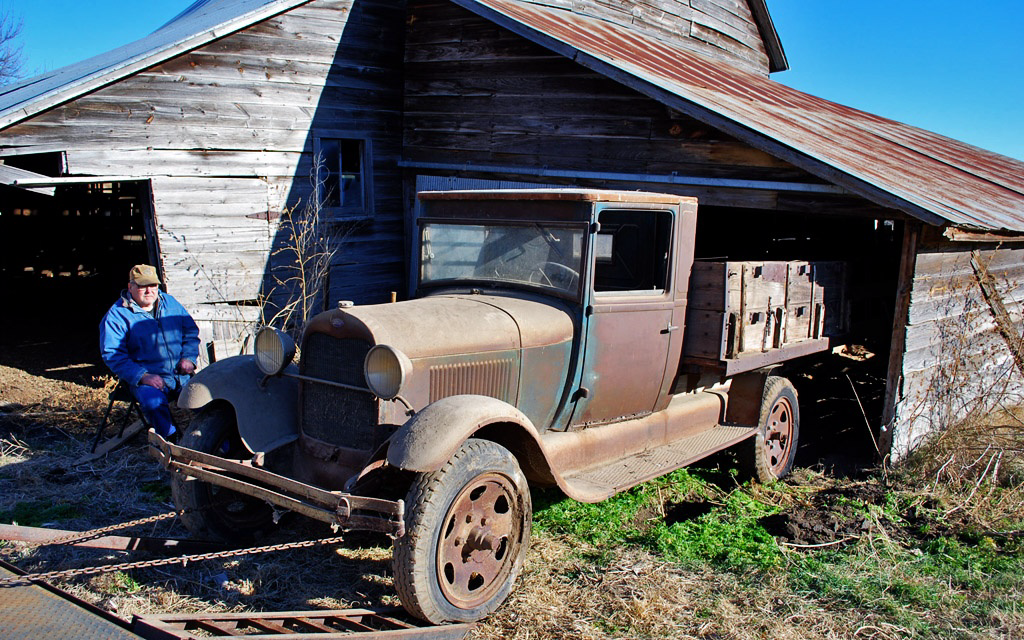
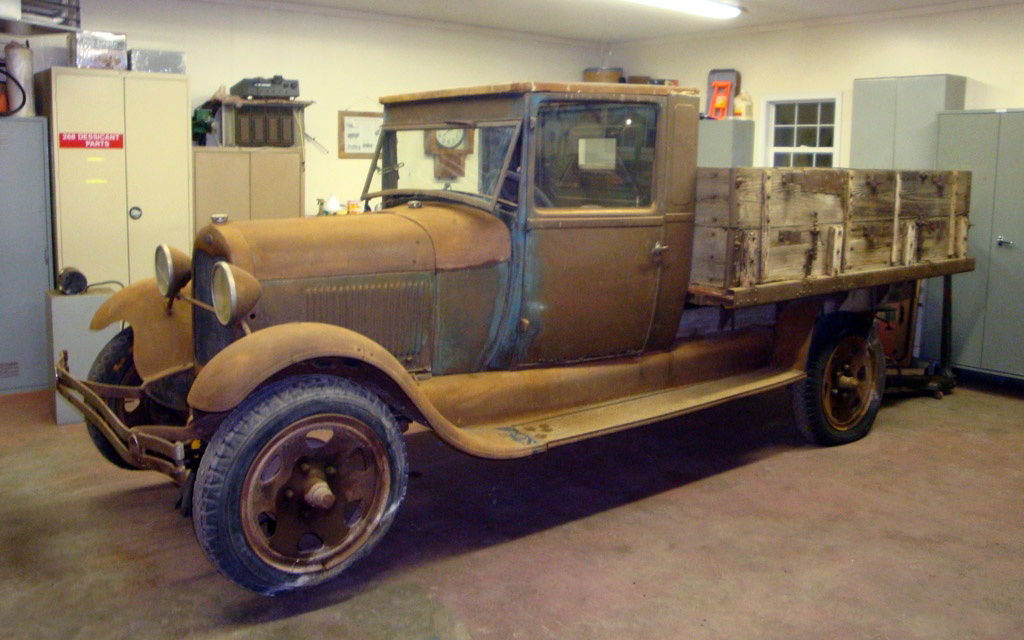
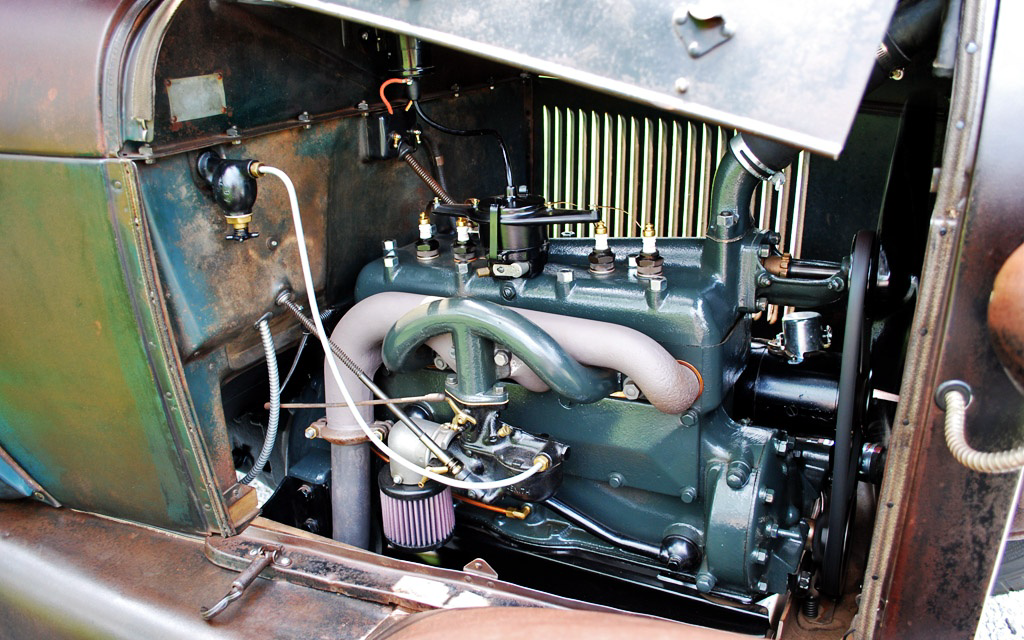
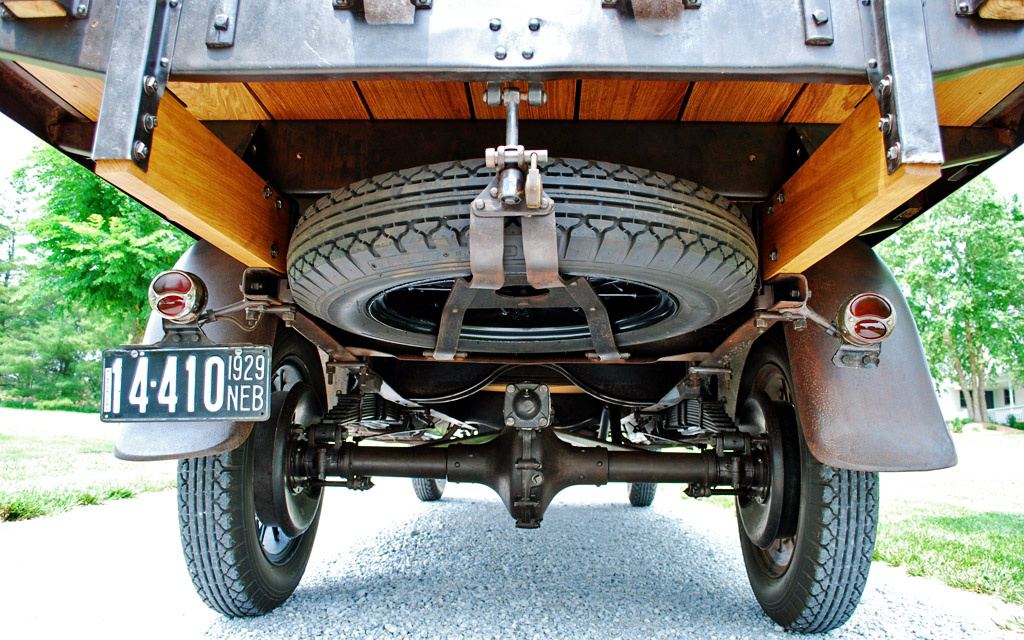
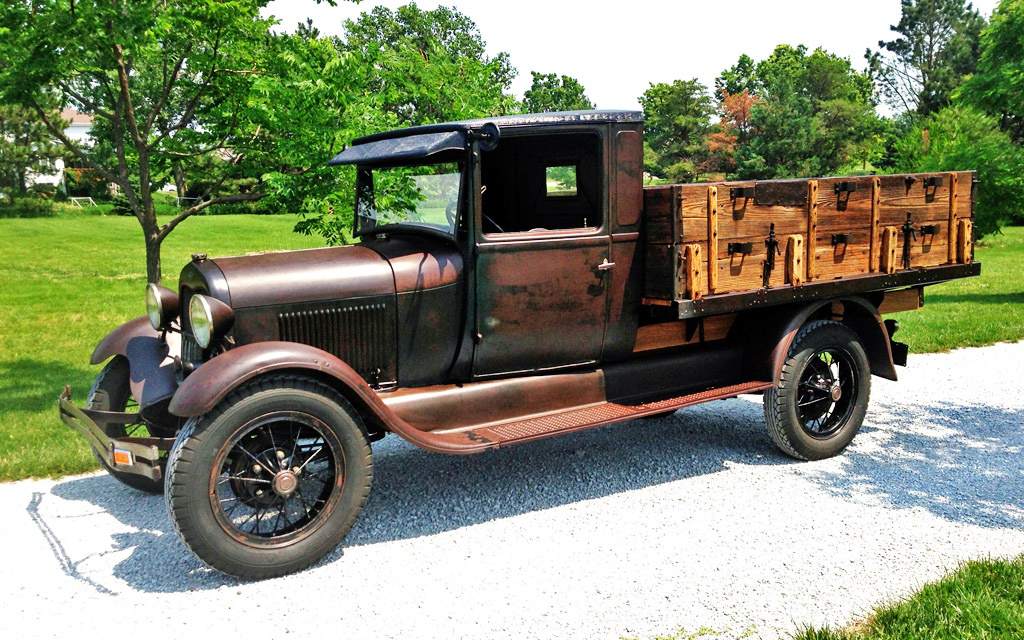
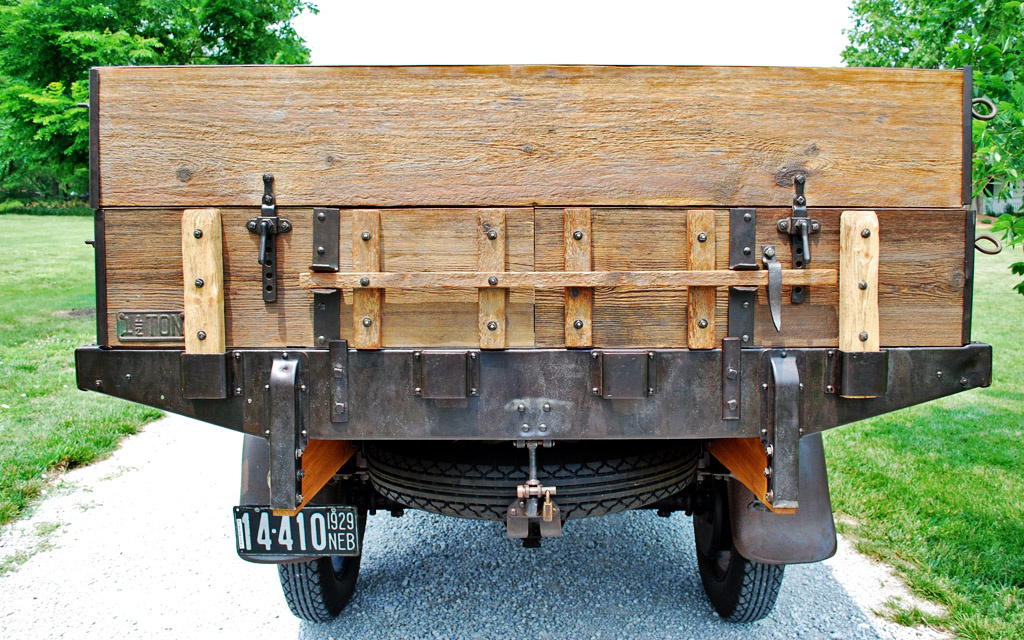






“The truck is not fast, even though it has the high speed rear end. The cursing speed is 30 mph.”
Agreed, I would also be cursing at that speed. ;D
Seriously though, this is an awesome restoration. Would love to park this truck in one of my garages. Nicely done!
You have Done The Business with this super old truck!
A great article, thank you!
ABF, (UK)
Bravo Zulu – Nicely done!
Beautiful & an excellent job of putting her back on the road.
I would hope that you drove it back to the Farmer’s place (if it was within reasonable distance) or mailed him the pictures of what you accomplished, as I’m sure it would given him a smile or two. I did that with a 1921 Harley-Davidson I’d retrieved from it’s original owner, who’d parked it in his basement back in 1930, ‘n I’d originally ‘discovered’ when I was a kid of 15, when he’d sent me down there to get some parts for a lawn mower (I’d been mowing his lawn). It didn’t see the light of day until 1969, when I went back in my 20’s, but he wouldn’t sell her to me ’til I proved I could still get the ‘clincher’ tires for it (I took a chance, ordered ’em, then showed ’em to him) i.e. after I’d restored her, I rode it back, ‘n he almost cried with joy..
Nice job, really nice!
keep yur Ferraris and fancy Teslas…………..I’ll take this truck. What a beauty. You can seat the entire Walton clan in the back.
love the look and the truck. 30mph would seem fast in this. are they mechanical or juice brakes? great job and thank for sharing.
I like the truck, for sure. I have a ’30 that I did a frame off restoration in ’89 then a complete inserted engine and ’39 gearbox in 2000. Now for what has been done to this truck, shame. Had I found it, the mechanical upgrades to a reliable driver is all that would have been done. If your going to wax the rust you might as well paint it. I saw quite a few of these old trucks still in service in the mid 40’s and I do not recall ever seeing “wire wheels”. Just sayin’.
28 had wires on BIG trucks and then in 29 they introduced stamped steel rims.
Wire wheels were used until about March of 1929. Most people changed over to the disc wheels to keep stuff from getting caught in the spokes. Henry continued to use up the wire wheels until they were gone.
Good article and excellent story! They can only be original once!
~ Great truck, great article. Thanks!
What they said, and it’s really good to see both before and after pics. Restores the faith that there can be an after that’s better than the before, and that it didn’t take the cost of an oceanfront house in So Cal to get there.
This is proof that a restoration/refurbishment can be done either way. Myself, if I was to tackle a job of this size, I’d have completely repainted it. It doesn’t take long for even new paint to look like it’s been around the block. Patina is greatly overstressed.
All my respect to this resto, congrats!
I really love it!
Yep!
The 28’s and 29 large Model A trucks did have wire wheels. Not sure about the 30-31’s.
I favor the way this was done. Anyone can put new paint on a truck, and it will be a nice looking old truck. But then you’d want brand new wood, too. Preserving this old used look makes it much more “believable” when you see it. I find it much more interesting, cuz that’s how they look when you are using them. And, when you can take a new fender and make it match all the old ones, that is real skill! Great work!
Cursing Speed! We have a new Car Term!
Love the truck!
My daughter and I are slowly…. restoring her 49 Ford F-3 pickup.
Found it in a goat field in Oklahoma.
This is a fine job of putting this truck back on the road, but make no mistake. This is not “original” in any sense. It is RESTORED to a particular individuals taste.
Neat find and great article and great restoration. I would like to do the same some day.
I am curious though. What is the standard and high speed rear end ratios?
Too much whining here about the preservation/restoration…..I like what you did…A LOT….new paint on an old truck…ho hum…but you did it YOUR WAY and its great.
I know that “cursing speed” all too well. My 1930 Chevy Sport Coupe has all the original running gear. I’m pushing it to do 35-40 lol.
Thanks for all of the comments on my truck. Putting this one back on the road has been a heck of an education, lots of fun, sweat and sometimes a good measure of pain and suffering. Putting a specific label on the restoration / preservation of the truck is a little complicated and hard to nail down. Anyway my goal was to make the truck as dependable as is possible, make it as correct as possible and as fun as possible to own, drive and share with others. Each of the last three years I have had the pleasure of driving it well over a 1000 miles per year. I enjoy taking it to the local car shows and it’s not unusual to come back with some sort of plaque or trophy from the shows. Yes it’s nice to get recognized for my efforts but for me getting a trophy is not what it is all about. In fact I have a special spot for the trophies on a piece of plywood up in the attic of my shop. Did I mention I don’t particularly like dusting?
People seem to get a good sense of the history that a vehicle like this has under its wheels.
Rob- Yes I did give the previous owner a ride in a parade at a Czech festival in a town just a few miles from his place. Pretty sure I saw a tear or two in the corner of his eye. Actually we have struck it off pretty well and stay in touch fairly regularly.
Jim- The brakes are mechanical and work well. Actually they would be good even if the truck was capable of going 50 or so.
Rod- If I had just upgraded the mechanicals I would be driving around in a truck that has no roof, cracked windows, no floor boards, rusted out springs for seats and an interior full of mouse turds. No thanks. No fun in that.
It was probably more work to polish up this truck than to strip it down and have someone blast and paint it. It can always be made to look new again. After all aren’t we only the keepers of these old cars and trucks. Someone else will own it someday. When that day comes it’s up to them to do with it as they wish.
If you look in the original as found pictures you can see that the wheels are a flat spoke 6 hole design. The 1928 and the very early 29’s had the wire spoke wheels. My truck was built on 1/29/1929. Henry Ford tended to use up his stock of parts rather than tossing them. By early February 29 the switch over to the six hole wheels was complete and no more trucks came with the wire spoke wheels. Since mine was early enough it was still technically correct for me to switch out to the wire wheels. I like the look of them better so I did. I still have the original set of five 6 hole flat spoke wheels if I should choose to change back over to them.
Doug- I got pretty good at rusting things. There are a number of nuts, bolts etc… that I just couldn’t find or they weren’t good enough to use so I had to sometimes machine and then age some new ones. The fender was the biggest challenge though.
Dustin- Low speed gear ratio is 7.25:1 High speed is 5.17:1 This truck also has what is called a Dual High transmission behind the standard three speed transmission. Even though it is called a dual high it really makes you go slower. It effectively splits you into three lower sets of gears. In low 1st you could crawl up a tree if the truck would stick to it.
People often ask how many miles per gallon I get with the truck. I always tell them I don’t really know but I do know that I get plenty of smiles per mile!
I, for one, like what you did. I don’t think waxing my modern car is a “modification”, and preserving the patina on this AA isn’t really modification either, at least as much as paint would be. So kudos to you and a great unique look. This truck “speaks” to you about its history. I would love to reach you by email to ask some questions. Is that possible?
You are absolutely right about having more work into the finish than if it were repainted. I’ve restored several vehicles in the usual way & that was enough work. Its really a labour of love to do what you did! You can paint 100 cars in the “correct” colors & line them all up & they look the same, any number done the way you did it would leave them all unique, & more appealing in my opinion… You’re right on the money with the mechanical work as well. A vehicle in motion tends to stay in motion (and make a lot of people smile). They were never meant to sit around like a piece of furniture…
Dave,
I agree 100%. Your truck is NOT restored. Basically you fixed what you found wrong with it and are preserving the rest. Restored cars at the highest level are the ones which the judges nit pick things like the plating used for the fender bolts, the threads per inch of the upholstery and other frippery.
Re: the dual high transmission. When did Ford start using the 4 speed with the granny low? Is the 3 speed in your truck the same as a regular model A?
Good job on a cool old truck!
z1rider- I believe that the 4 speed started to come into use late in 29. Standard on the 30-31’s. The three speed is the same as the cars.
Cursing speed. Took me a while to catch on to where that came from. Should have been crusing speed. Still sort of has a bit of truth in it I suppose.
The cursing is from those following:)
Josh,
You posted my barn find – 1949 Chevrolet about a year or so ago and I have a huge one coming later this month. A barn full of old Fords that once I get mine out of there I will share pictures
Dave, thanks so much for preserving this vehicle! I can’t imagine your truck looking any better than is does in the photos. They’re only original once! With my brother & I both having original, unrestored ’29 A’s of our own, I know that wonderful sense of knowing when you hit 30 mph by the sound in your ears & the feeling in the seat of your pants without even looking at the speedometer (and that “don’t push your luck” feedback at speeds north of that)! And, living in Amish buggy country, having the satisfaction of coming across one of the few vehicles we can pass! Yours is a beautiful, beautiful truck!
Where do you find the value for a barn find in this condition? Or if you would email me how much you paid for this one in this condition or if you know what it is worth in 2017 I would love to know. thank you (not the restored condition)
Megan, Didn’t see your post until today 12/14/17.
Feel free to contact me at [email protected]
Dave, despite the fact that l have my own ’29 pick up l am still envious of your truck. It is the Waltons truck except for the bed. Ford had an elongated pickup bed they put on these trucks but l like yours better. I like your version of restoration also. I did my pickup without the exspensive paint job but still painted it. To each his own. The three speed tranmission was the truck transmission. The cars had the same but had a different clutch. The clutch had a high rate of failure in the cars so they started installing the truck clutches in the cars and stayed with that. This brought about the distinction between the A and the double A. After ’28 it was a mute point but what stuck stayed! The truck did have a high/low pedal on the floor for heavy loads. Early trucks had a worm gear drive for a rear end. Its top speed was about 25 but could pull a mountain! I have enjoyed your article immensely , thank you. Vernon [email protected]
Hi Vernon, Glad you like what I did to the truck. I’m sure you are enjoying yours. A little over a year ago I swapped out the dual high transmission for a Warford overdrive that I rebuilt. It is a direct replacement for the dual high and no modifications are needed. Plus it is period for the truck. With the Warford I am able to reach speeds of up to 50 mph but it is very happy (and me) at 40 mph or so. The Warford is an underdrive, straight drive and an overdrive. Best of all three worlds.
These trucks are a hoot!